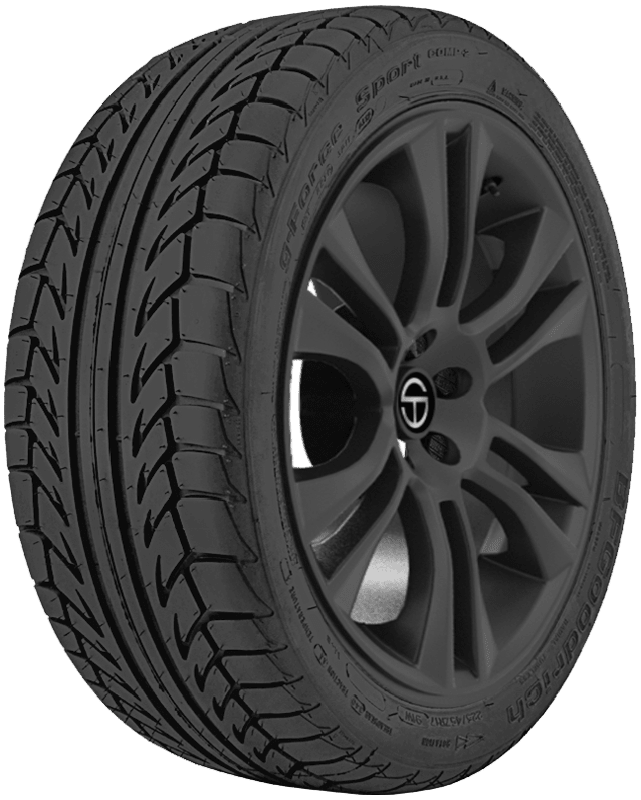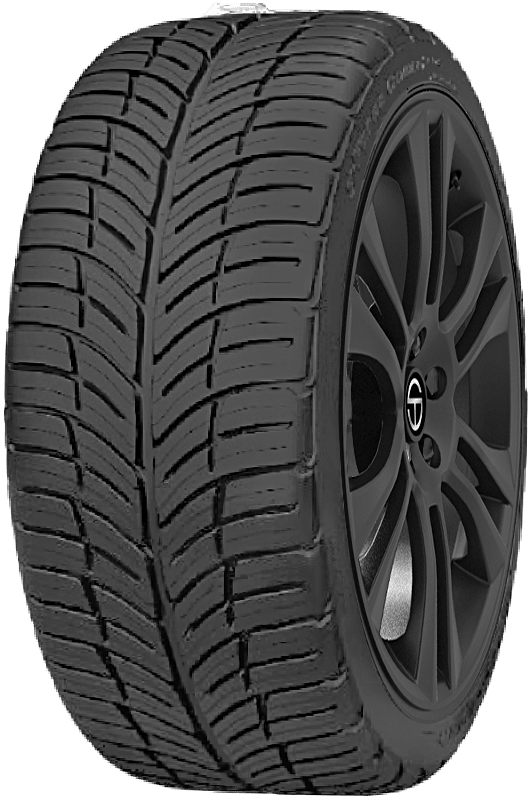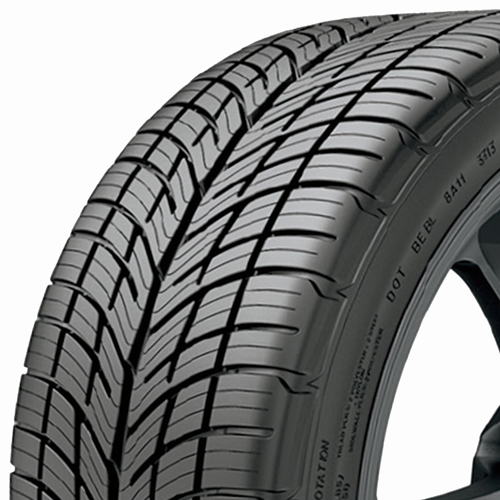
In a reasonable second place was the Yokohama offering. It just didn’t have the abilities of the other two, and I experienced understeer under braking, and oversteer once I’d transitioned back to the throttle.

The General Tire was, by a decent margin, the least capable tire in the wet within this test’s constraints. The new Mustang chassis is pretty darn good for a front-engine rear-driver, and offered a good platform for comparison. When installed on a bunch of Mustang V6 models, the comparison between the three tires was made simpler. If I’m honest, I was quite surprised at the capabilities of all three tires, but the BFG was a head-and-shoulders winner in this test as well. I’ve never really had the opportunity to experiment with wet-weather handling before, so this was probably the best part of the day for me. In this test, the Comp 2 was compared directly with Yokohama’s AVID ENVigor and General Tire’s G-Max A/S 03. I realize that space and time constraints make that difficult, but it would have been closer to ideal. This one was only about a 20 second sprint, where I like a nice long 60-second course or so. It’s not a terrible way to test tires, as it allowed us to drive the same course back-to-back with the competition, but if I’m honest I would have liked a slightly longer course. The course consisted of a short slow slalom that led into a medium speed sweeper with a lane-change style chicane at the end. The second test I subjected the tires to was a wet miniature autocross course.

That’s the difference that could save you from burying your front bumper into the stationary car in front of you. Between everyone at the test, the BFG stopped an average of 8.5 feet shorter in the wet and 13 feet shorter in the dry. Stopping shorter in dry or wet conditions means that the BF Goodrich car could actually save you a ton of money in bodywork repair by stopping earlier than the same car on the competition’s tires. In comparison with the Hankook Ventus Noble s1, the g-force Comp 2 A/S felt much grippier, which was corroborated by the in-car mounted Vbox data acquisition boxes, showing consistently shorter stops in the BFG shod cars. From 50 miles per hour on this car, the tires gripped well in both wet and dry conditions. In test #1, we were put in the driver’s seat of some brand new Audi A5 coupes to test the straight line braking capabilities of the tires. In every test, the BFG outperformed the other tires. There were four different tests that we were given the opportunity to back-to-back test between the Comp 2 and the competitors wet/dry straight line braking distance, wet handling course, dry handling course, and highway noise. The car choice was a bit underwhelming, but the tires proved to work pretty well, especially in comparison with the similarly priced performance all season competition. But, for those three seasons, it seems to be pretty darned good at it’s job.ĭuring the testing regimen, unfortunately, we were not given any nice new Porsches to drive around, and in fact, we were stuck in a bunch of different cars that were all automatics. In fewer words, this is designed more as a three season tire than a four season tire. M+S rated tires are not proper snow tires.). That’s not to say that this tire is garbage in the winter, but if you live in a northern climate that gets more than a few inches of snow per year, you should probably have a dedicated set of snow and ice tires anyhow (designated with a ‘three peak mountain – snowflake’ design on the sidewall’. This tire has had to compromise a bit of snow performance in order to increase it’s dry and wet traction and lateral grip. So how is this one any different?īF Goodrich has rated this tire as an all season, but they don’t pull any punches about it working through a heavy snow winter.

I’ve always said that All-Season tires should really be called No-Season tires, because in my mind they’ve always been the ‘Jack of all trades’ tire, while mastering none. I’ve always been a seasonal tire buyer, believing whole-heartedly in the concept of summer and winter tires existing separately. When BF Goodrich told me that they had a new performance all season, I immediately questioned whether such a thing were actually possible. You should know up front that I take tires and tire technology quite seriously. So how does this relate to ? Well, we’re going to investigate whether this tire could or should be your choice for your Porsche’s next set. It was a very fun trip, and I was honored to be there.
#Bfgoodrich g force comp 2 full#
They also had a full day of car and tire testing activities. In the interest of full disclosure, BFG payed for me to fly to Phoenix, put me up in a very nice room at a very nice hotel, and gave me as much food and drink as I could ever want (BFG is owned by sponsor Michelin). A few weeks ago, I was invited to represent at the launch of a brand new ‘performance all season’ tire from BF Goodrich in Phoenix, AZ.


 0 kommentar(er)
0 kommentar(er)
